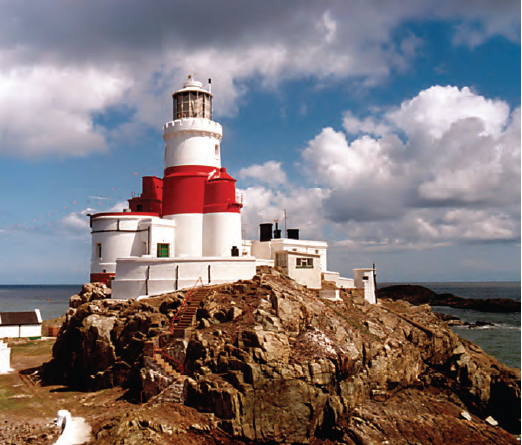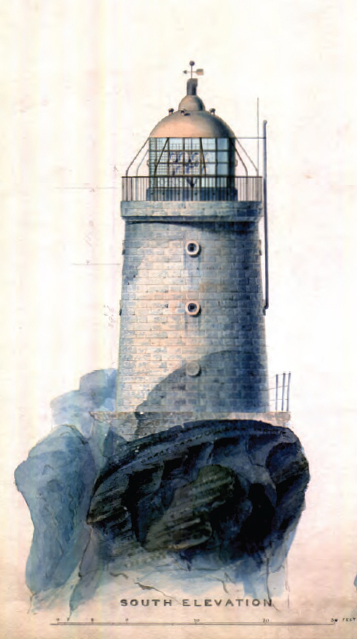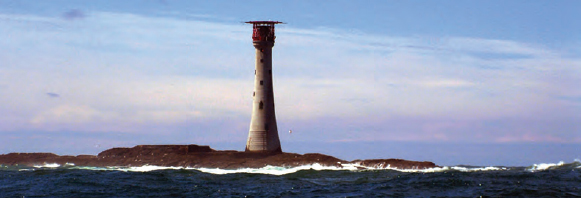
The Skerries
(CJ Foulds)
WHEN THE second edition of this book was published at the beginning of 1996, the automation of the British lighthouse service was in full swing. Indeed, the process that had been underway in earnest since the 1970s was, if anything, drawing to a close. Most of the major rock lights had lost their keepers and were controlled from a bank of monitors inside the Trinity House depot in Harwich, or the Northern Lighthouse Board headquarters in Edinburgh.
By the end of 1998 it was complete. The era of the manned British lighthouse had ended. There is now no such thing as a lighthouse keeper. All British lighthouses function entirely automatically – the silicon chip, cycle-charge generators, solar panels and telemetry have seen to that. They still require annual routine maintenance visits and fuel replenishment, but gone is the era when three men kept a twenty-four hour, seven days-a-week, fifty two weeks-a-year watch inside every lighthouse tower.
The final Trinity House rock station to lose its keepers was Hanois in the Channel Isles, a Nicholas Douglass tower very much in the traditional rock lighthouse ‘design’ – rising as it does from a sea washed reef. It also had the distinction of being the first rock lighthouse to be powered entirely by solar energy. The very last British rock lighthouse to be converted to automatic operation was Hyskeir in the Hebrides. The NLB finally withdrew the keepers here on 31st March 1997.
Although, not strictly rock lighthouses, it is appropriate to mention here the final Northern Lighthouse Board and Trinity House stations to succumb to automation. When the lighthouse flag at Fair Isle South was finally lowered on 31st March 1998 in the presence of Her Royal Highness The Princess Royal it was the culmination of over 30 years of planning and conversion, and brought to an end a tradition of over 200 years of Scottish lighthouse keeping. The Chief Executive of the NLB James Taylor said, “This is truly a sad and memorable occasion, as we pay tribute to the men who have served the Board and the Mariner so well for over 200 years. From now on we provide the same service to the same high standards through an entirely automated network. The Lightkeepers, a truly remarkable and dedicated breed of men, are gone, but we will never forget them.”

The Skerries
(CJ Foulds)
The last of all was Trinity House’s North Foreland station on the Kent coast. This was the very last manned lighthouse in the United Kingdom, and at a ceremony attended by The Master of Trinity House, His Royal Highness The Duke of Edinburgh on 26th November 1998, the flag was lowered and the last six Trinity House keepers left the Service. The British lighthouse service was now totally automatic. The era had ended.
Since those two occasions the lighthouse service has entered a new century where, responsive as ever to the needs of the mariner, the two lighthouse authorities continue to provide a service as reliable and cost-effective as they always have. The NLB has had a particularly active programme of new lighthouse construction in response to local requirements. Not ‘rock’ lights in the mould of the examples in this book, but smaller, basic navigation aids known as ‘minor’ lights that function entirely automatically and require minimal maintenance. However, they have even built a light that would fit the description of a ‘rock’ lighthouse to improve the navigation through an extended deep water passage to the west of the Outer Hebrides. The uninhabited island of Haskeir has never had a navigational aid of any sort, but since October 1997 it has been the home to a ‘major’ light (that actually looks like a lighthouse) to aid vessels into and out of the oil terminals of Shetland.
With the pin-point accuracy of satellite navigation some lights have been deemed to be surplus to requirements and have had their upkeep and administration devolved to various pilotage and port authorities, or have been closed and sold as private dwellings. Spending a different sort of holiday in a former keepers cottage around the coasts of England, Wales and Scotland is now possible at a wide variety of locations.
Powering lighthouses with solar and even wind energy has become a common policy for both the NLB and Trinity House over many years and is clearly going to be the way forward for both authorities. Banks of solar panels are commonplace at both rock and shore stations – the energy they harvest is used to replace the diesel engines that used to recharge the batteries at each station. Power from light to produce a light in the dark.
C.P.N.
May 2006

Samuel Wyatt’s original Longships lighthouse of 1795.
(Trinity House)

The Smalls
(Steven Winter)